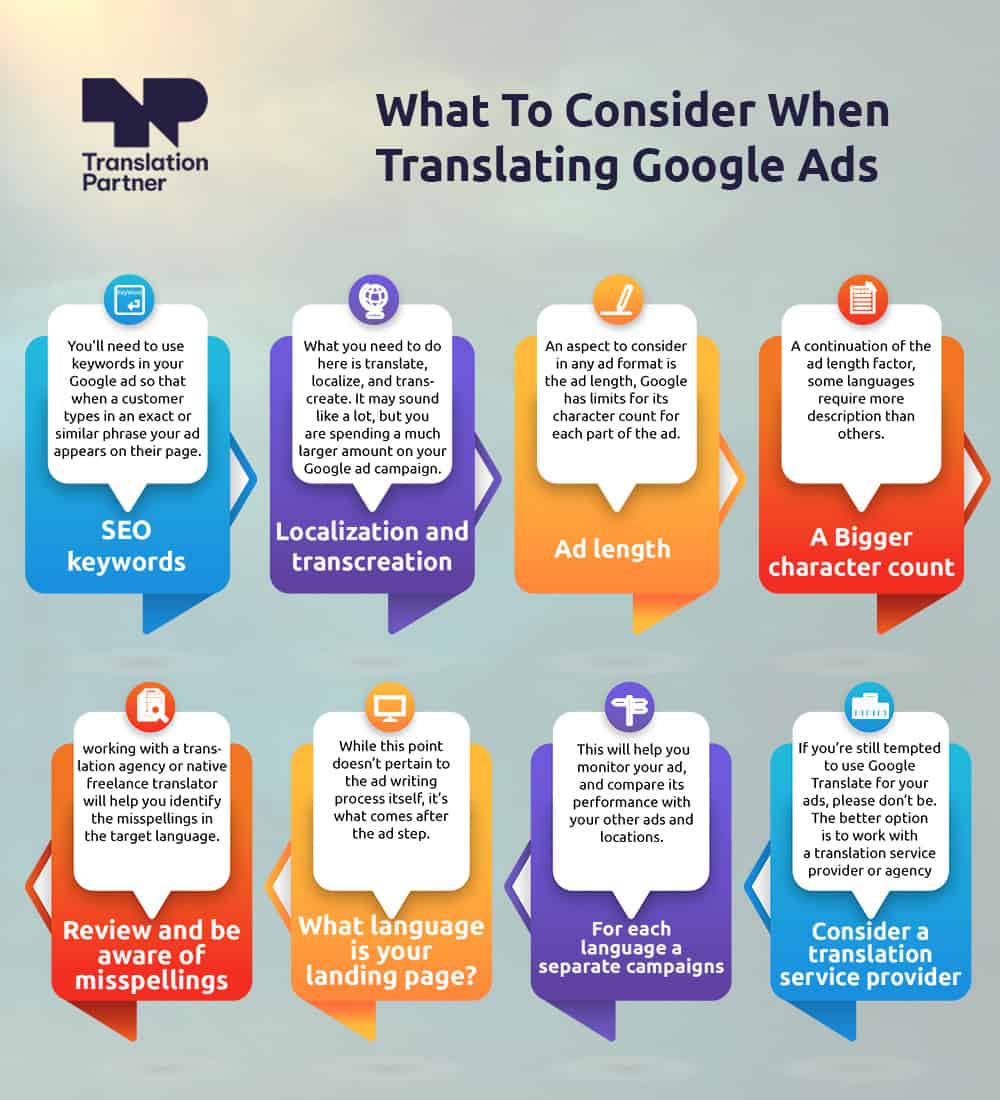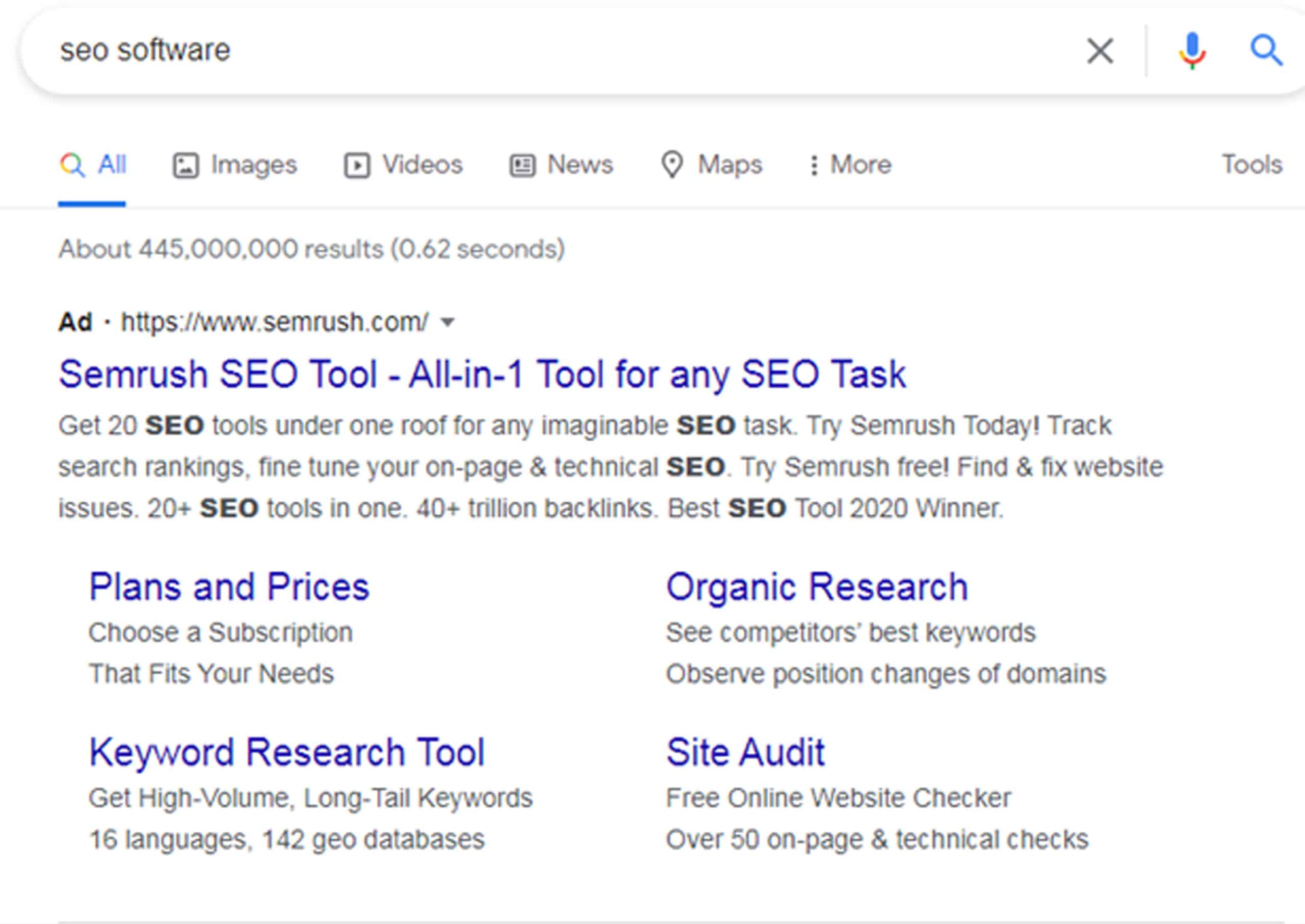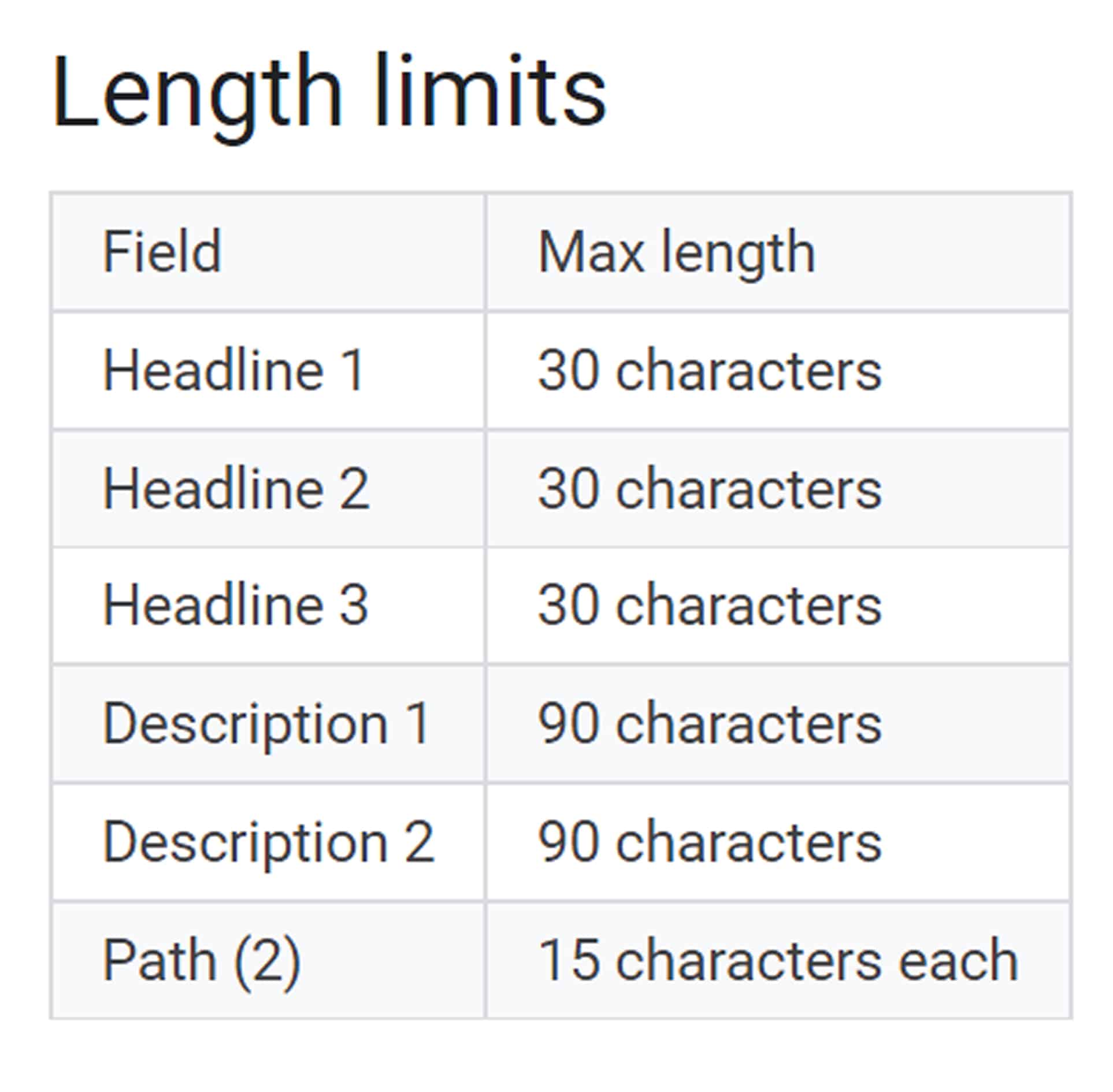If you’re managing ad campaigns for international companies or even local ones that have an international audience, you may have to translate your social media ads and Google ads.
And while many may think that Google might use its Translate feature or that simply copying and pasting the text on Google Translate would be the way to go, because it’s all Google, right?! – The truth is: No!
Google doesn’t translate its ads. So if your target audience is French and your ad is in English, those French customers will see the English version of your ad.
Naturally, few will engage with it, and many won’t even click to see what it’s about.
What you need to do here is translate your Google ad into the local language.
In this article, we’re going to talk about ad translation and what you need to consider when translating Google ads.
Translating Google ads and social media ads: is it worth it?
Whether you’re an e-commerce business or a service-based company, running ads may be part of your marketing strategy for generating leads.
Depending on what you’re selling and where your target audience is, you may be running ads on social media or Google, or both.
But targeting audiences that speak a different language can be tedious and costly if your translated ads don’t say what you want them to say.
A survey by Kantar and CSA Research of over 8,700 global consumers across 29 countries found that 65% of consumers prefer content in their language, even if it’s of poor quality.
And if people are willing to read poor-quality content in their native language, having low-quality ad copy will likely do more harm than good.
You see, translating ads isn’t the same as translating a news piece, a technical document, or even other marketing materials.
You’re bound by factors such as word count, search engine optimization (SEO), and language, among other things. Visual is another element to consider if you’re an e-commerce website.
In addition, your click-through rates (CTR) are likely to be higher when your ads are written in the target audience’s language, according to an experiment by Search Engine Journal (SEJ).

Why should you avoid poor-quality ad translation?
A bad translation of a Google ad is a costly endeavor.
You’re likely to pay more simply because:
– Irrelevant audiences are clicking your ad and not converting
– Your target audience doesn’t understand the ad
– Your audience is wary of your business
And even if your audience understands the ad, landing on a website in a different language may prompt them to leave.
So it’s a lot of money down the drain.
This means that the quality of the translated ad plays a major role in its performance. But with Google Ads specifically, you want to go beyond translation and focus more on localization.
Localization is a type of translation that considers the cultural aspects of a language and the country where the language is spoken.
And although localization “can often feel overwhelming, like an all-or-nothing endeavor…It’s not.” (Shopify)
What to consider when translating Google ads
There are several factors you need to consider before embarking on a Google ad translation.
Here are the top 8 factors:
1. SEO keywords
SEO is vital in Google. It shows you what your target audience is looking for and how to target them.
You’ll need to use keywords in your Google ad so that when a customer types in an exact or similar phrase, your ad appears on their page.
For example, this is a Google ad that appears when I search for SEO software.

2. Localization and transcreation
Next up is tackling the language of the ad. Let’s say you’re targeting customers in Germany, but your ad is in English.
Assuming that customers who see your English ad will click it is a bad assumption. Some will, most won’t. It would look odd to see an English ad amid a German Google search result.
What you need to do here is translate, localize, and transcreate. It may sound like a lot, but you are spending a much larger amount on your Google ad campaign.
This means you’ll be combining translation with localization. Transcreation is a part translation and part content creation since your ad should involve some copywriting.
In other words, your ad doesn’t have to be 100% or even 80% similar to the English version. It’s more important for your Google ad to deliver the meaning and accordingly hit the mark, which is getting customers to click.
3. Ad length
An aspect to consider in any ad format is the ad length. For Google ads, Google has limits for its character count for each part of the ad.

This character count will apply to the translated ad. So you’ll need to bear it in mind.
4. Be aware that translation may result in a bigger character count
A continuation of the ad length factor, some languages require more description than others.
If you’re an Arabic speaker, you’ll see this often in writing. Arabic doesn’t have hyphenations like “three-book series” or “multiple-ad options.” Everything has to be spelled out.
This applies to many languages. Hence, the need to include transcreation in the ad translation process.
5. Review and be aware of misspellings
Most of the time, Google offers something that social media ads don’t, and that’s considered a benefit. That’s misspellings.
While misspellings are generally frowned upon, Google allows advertisers to include misspellings in their targeting.
You can use this to your advantage when translating a Google ad.
Although this is included in your ad settings, working with a translation agency or a native freelance translator will help you identify misspellings in the target language.
6. What language is your landing page?
While this point doesn’t pertain to the ad writing process itself, it’s the what-comes-after-the-ad step.
Let’s say you’re an e-commerce store for sportswear. Your website is in English, but you’re targeting people in France. You localize your ad into French, and you assume you’re ready.
But when those French speakers click your ad, they find themselves on a sportswear page in English. Are they going to buy it?
The data says nearly half of them won’t.
Kantar’s research found that 40% of people surveyed weren’t willing to buy from websites that weren’t in their native language.
An e-commerce website, in this case, might opt to work with an e-commerce translation agency to turn its single-language website into a multilingual one.
7. Create separate campaigns for each language
Another marketing-localization tip is to create separate campaigns for each language.
If you’re targeting English speakers in Europe, then feel free to target all of Europe in your ad.
But if your campaign involves several languages, then it’s best to separate your campaigns. This will help you monitor your ad and compare its performance with your other ads and locations.
8. Consider a translation service provider
If you’re still tempted to use Google Translate for your ads, please don’t be.
While Google Translate can help you get an overall idea of a large piece of text, it’s never going to offer a perfect or even near-perfect translation.
The better option is to work with a freelancer or a translation service provider, or agency, like TranslationPartner.
“Keep in mind that the same language can have significant regional differences. Spanish in Spain will differ from Spanish in Mexico,” notes SEJ.
Wrapping Up
For some businesses, Google Ads are essential for generating leads and converting potential buyers.
And with the rise in e-commerce and availability of almost all products and services online, many individuals and businesses can now get their needs from a different country delivered to their homes.
But this surge in online buying comes with a few challenges. Chief among them are language barriers and trust.
So it’s important to remember that ad translation differs from website translation, from e-commerce translation, and so on.
For some, it may all sound like translation, but the process and tactics involved are quite different.
As a business looking to sell to an international audience, you’ll need to focus your efforts on your target audience, your choice of Google or social media ads, their language, and, of course, customer retention.

